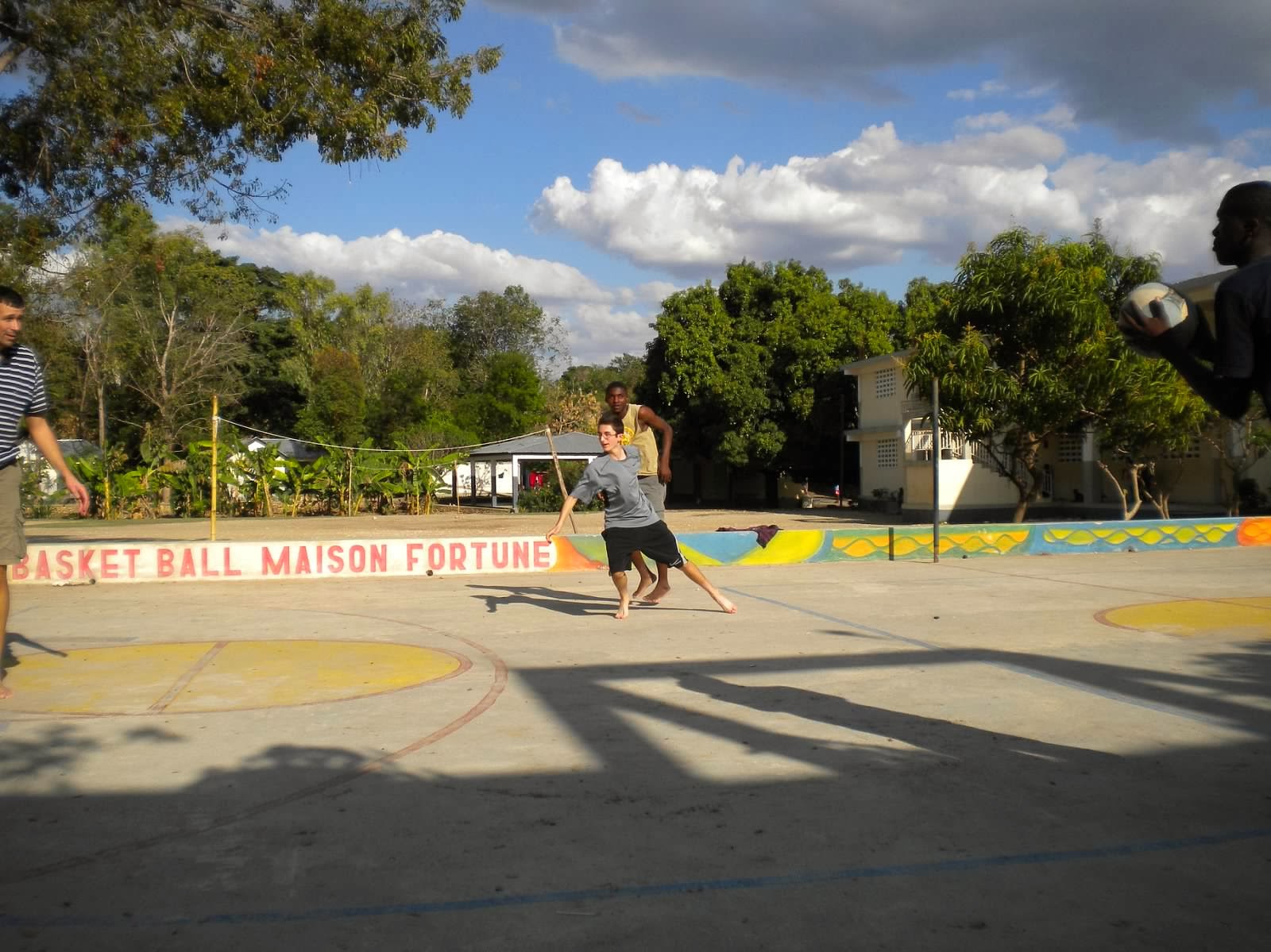Here we have two posts on the Azil by two of our travelers. Both are included because the Azil affected each of us somewhat differently.
[posted by Vicki Brooke]
Friday finally
arrived and was the day we would visit the Azil. We had left our little cocoon of Cerca and
traveled to the big city of Hinche. My
husband and daughter had talked about their visit to the Azil immediately
following the earthquake, so I thought I had prepared myself for this
visit. But even with this support I
found this place to be both beautiful and emotionally gripping at the same
time.

As
with all other properties in Haiti, the Azil is enclosed by 12-foot cinder block
walls and a enormous metal gate. As we
drove up to the front gate and honked an attendant opened the gate and the
first image we saw was a huge picture of Mother Theresa painted on the wall of
the building. The Azil is run by Mother
Teresa’s order, the Missionaries of Charity, and visitors are greeted by angels
in the highly recognizable white and blue habit swishing about the Azil tending
to their little guests. Families in the
city and surrounding mountains bring their young children or babies to the nuns
and staff at the Azil when they can no longer care for them. Here at the Azil the little ones get medical
attention, food and loving care. The
nuns and staff care for the little ones until they are able to return to their
families or return to God.
The first room with cribs had one
and two year old children, many standing up in their metal cribs clearly able
to climb out but none of the children seem interested in getting out. These little ones were quick to laugh and
full of joy. The next room had the
babies and children with more significant needs. Many of the babies in this room were
unstable. We were all eager to pitch in
to hold the babies, feed and change diapers.
One team member, a nurse, felt pretty confident that one particular baby
would probably not live through the night.
We touched her, knowing that we were in contact with a little
angel. My little guy closed his eyes as
soon as I picked him up and brought him close to me. He never moved or uttered a sound.
After a
while one of the sisters stopped her duties and spoke to us briefly. While extremely pleasant it was clear that she
had more pressing duties than to tend to our questions. Her mission was the care of the baby. I knew I was in the presence of Holy Spirit.
Before
leaving we spent some time with a group of youngsters who, perhaps 3-5 year old
were on break from class. While all of
us had children on our laps our team member Troy soon had children climbing on
him, like he was a tree. When it was
time to leave the children followed Troy out of the building and all the way to
the car. It was a joyful way to end our
visit.
[posted by Lydia Turkaly]
As I mentioned in an earlier post, this was my second trip
to Haiti, my first trip being right after the Earthquake in 2010.
One of the most memorable and sad experiences from my first
trip was a visit to the Azil, a place run by the Missionaries of Charity, the
group of nuns that Mother Theresa founded.
Parents can drop off their malnourished children to hopefully be nursed
back to health by the nuns. Parents can
visit their children while they are there and hopefully take them home once they
are healthy, but a happy homecoming isn’t guaranteed.
I will never forget
my first visit there, the sounds, the smells, the many, many children who were
on the verge of death. As I held one of
the infants and tried to feed him I wasn’t even sure he was still alive. This was so upsetting to me that I am ashamed
to admit that when the child would not take the bottle I was offering him I
returned him to his crib and quickly left the room. I was nearly sick to my stomach and overcome
with the horror of the situation as I saw room after room of malnourished
children.
As I prepared to return to Haiti the only thing I was
concerned about was visiting the Azil again.
I felt great guilt about not wanting to go back. However, to my great surprise I found a very
different situation than the one I saw 4 years before. The number of children at the Azil was
greatly reduced and I am hoping this is due to improved living conditions. The
children I did see appeared much healthier and were beaming when they saw their
newest group of visitors. The toddlers
in the cribs were very playful and I was even able to get a laugh or two out of
a few of them by playing peek-a-boo.
There were some very sick infants but compared to what I had seen before
I felt relieved and thankful for the progress being made.
The Sisters are amazing and the work they do is so
inspiring. They are truly doing God’s
work and will always be my heroes.
.JPG)







.JPG)



.JPG)
.JPG)
.JPG)






.JPG)



















.JPG)




